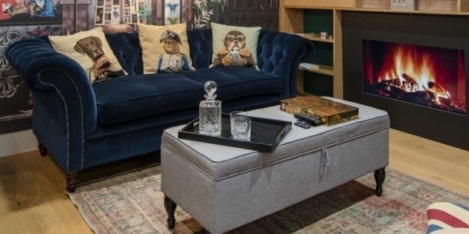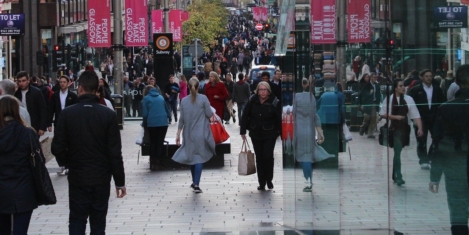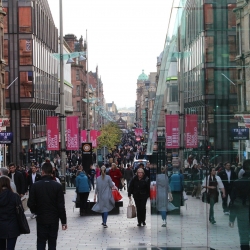To provide the best experiences, we use technologies like cookies to store and/or access device information. Consenting to these technologies will allow us to process data such as browsing behaviour or unique IDs on this site. Not consenting or withdrawing consent, may adversely affect certain features and functions.
The technical storage or access is strictly necessary for the legitimate purpose of enabling the use of a specific service explicitly requested by the subscriber or user, or for the sole purpose of carrying out the transmission of a communication over an electronic communications network.
The technical storage or access is necessary for the legitimate purpose of storing preferences that are not requested by the subscriber or user.
The technical storage or access that is used exclusively for statistical purposes.
The technical storage or access that is used exclusively for anonymous statistical purposes. Without a subpoena, voluntary compliance on the part of your Internet Service Provider, or additional records from a third party, information stored or retrieved for this purpose alone cannot usually be used to identify you.
The technical storage or access is required to create user profiles to send advertising, or to track the user on a website or across several websites for similar marketing purposes.
 Workplace Insight and IN Magazine publisher Mark Eltringham recently took part in a lively episode of the Nowhere Office podcast with Julia Hobsbawn, Stefan Stern and Joanna Swash. They considered the current nature of work, what long term changes we can expect to emerge now and the role of working culture in providing a great experience for everybody, whoever and wherever they are – and whenever they might work. (more…)
Workplace Insight and IN Magazine publisher Mark Eltringham recently took part in a lively episode of the Nowhere Office podcast with Julia Hobsbawn, Stefan Stern and Joanna Swash. They considered the current nature of work, what long term changes we can expect to emerge now and the role of working culture in providing a great experience for everybody, whoever and wherever they are – and whenever they might work. (more…)






 Organisational purpose, responsible business practices and diversity are growing in importance at Board level and for HR teams, as employers make the connection between good environmental, societal and governance practices and business growth, according to survey findings from the Reward & Employee Benefits Association (
Organisational purpose, responsible business practices and diversity are growing in importance at Board level and for HR teams, as employers make the connection between good environmental, societal and governance practices and business growth, according to survey findings from the Reward & Employee Benefits Association (
 One of the unintended consequences of the pandemic has been to focus attention on the issue of indoor air quality. But as Sarah Zhang points out
One of the unintended consequences of the pandemic has been to focus attention on the issue of indoor air quality. But as Sarah Zhang points out 
 The word ‘languishing’ is being bandied around in the media as the world tries to recover from the pandemic and is experiencing many struggles resuming a semblance of ‘normal life’. Recent articles in
The word ‘languishing’ is being bandied around in the media as the world tries to recover from the pandemic and is experiencing many struggles resuming a semblance of ‘normal life’. Recent articles in 
 The new
The new 
 More than a half a million UK employees could be made to return to their normal workplaces before they are comfortable doing so, according to new research from
More than a half a million UK employees could be made to return to their normal workplaces before they are comfortable doing so, according to new research from 
 Heralding the age of a more compassionate type of leader, almost eight in ten (76 percent) UK business leaders consider their employees to be friends, not just colleagues, with three quarters (74 percent) admitting they want their employees to like them, claims new research from
Heralding the age of a more compassionate type of leader, almost eight in ten (76 percent) UK business leaders consider their employees to be friends, not just colleagues, with three quarters (74 percent) admitting they want their employees to like them, claims new research from 
 Amid news that the UK government is mulling plans to grant Brits the right to work from home permanently, a new
Amid news that the UK government is mulling plans to grant Brits the right to work from home permanently, a new 
 The amount of unpaid overtime that workers around the world are doing has soared in the past year; unpaid overtime in the UK has steadily risen from six hours in 2019 to seven hours in 2020 in the advent of COVID-19, to almost eight hours in 2021, claims a new study by the
The amount of unpaid overtime that workers around the world are doing has soared in the past year; unpaid overtime in the UK has steadily risen from six hours in 2019 to seven hours in 2020 in the advent of COVID-19, to almost eight hours in 2021, claims a new study by the 
 The commute as we knew it may be gone for good, claims new research conducted by
The commute as we knew it may be gone for good, claims new research conducted by 
 The significant shift to homeworking as a result of the COVID-19 pandemic has exposed deep differences in job quality across the Scottish workforce, according to
The significant shift to homeworking as a result of the COVID-19 pandemic has exposed deep differences in job quality across the Scottish workforce, according to 







July 9, 2021
Yoga is not a wellbeing strategy
by Stephanie Fitzgerald • Comment, Wellbeing